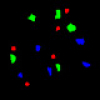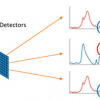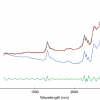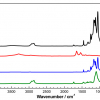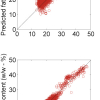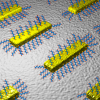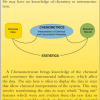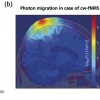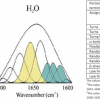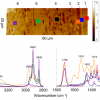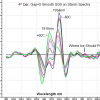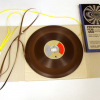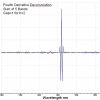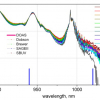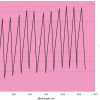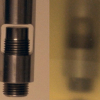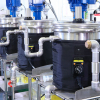Articles
Near infrared hyperspectral imaging for foreign body detection and identification in food processing
With continuing food scares around the world, food producers need every tool they can get to prevent contamination of their products at every stage of production. Hyperspectral reflectance imaging in the NIR combined with chemometrics shows much promise for the detection and identification of foreign bodies among food grains.
There are a number of approaches, and by combining FT-IR imaging methodology with microfluidics devices, the opportunity to study live cells by FT-IR imaging in controlled environments is now possible.
Tony (A.M.C.) Davies starts a review of the chemometric ideas that have most excited him over the last 30 years. In this column, he looks at the use of Fourier transformation for data compression. FT can also provide the side benefit of reducing high-frequency noise.
Chemical modification of wood by methods such as acetylation is required to improve characteristics such as photosensitivity and combustibility, and to provide harmonisation of wood properties in order to avoid swelling and shrinking and to improve biodegradability. The authors describe the use of mid and near infrared spectroscopies to monitor chemical changes due to acetylation is described.
The presence of “particles” in protein pharmaceuticals (biologics) can cause severe, unwanted effects in the drug. The article describes the use of mid-infrared micro-spectroscopy for the investigation and chemical characterisation of single particles in these biologics.
Tony (A.M.C.) Davies and Tom Fearn describe an enhancement of the popular partial least squares (PLS) technique, powered partial least squares (PPLS), that has shown significantly better results.
In principle, electromagnetic SEIRS should be as strong as electromagnetic surface-enhanced Raman scattering (SERS) but, in SEIRS, disturbing fluorescence is absent. In order to get maximum IR vibrational signal enhancement for sensing of rare molecules, strong resonant scattering of plasmonic objects is recommended.
Tony Davies makes sure we understand “What IS and what is NOT chemometrics” and why it matters.
“Measuring brain activity using functional near infrared spectroscopy: a short review” by Felix Scholkmann and Martin Wolf looks at the various methods for performing fNIRS and some applications that demonstrate why this non-invasive, safely applicable, portable and cost-effective method is now an integral part of the techniques used in neuroscience.
A. Roque, I. Ponte and P. Suau look at “Infrared spectroscopy of nucleoprotein complexes”. The advantages of IR spectroscopy have allowed them to determine the structure of linker histones and protamines as they interact with DNA. Linker histones are involved with the condensation of the thick chromatin fibre and are believed to have a regulatory role in transcription through the modulation of chromatin higher order structure.
It is possible to obtain both infrared spectra and thermal analysis data of individual layers in a cross-sectioned multilayer film. Since both techniques are AFM-based, the topographical features can be readily linked to the spectroscopic and thermal data at a much higher spatial resolution than previously achievable.
The Tony Davies Column once again contains a contribution from Karl Norris, who is widely regarded as the “father of NIR spectroscopy”. Karl continues to produce innovative ideas about the field and this article is no different. Building on the previous article concerning fourth derivatives, Karl has investigated the effect of varying gap sizes with some remarkable results.
Do you remember magnetic tape-to-tape recorders and players? In any case, I am sure you will be interested in this article looking at the use of FT-IR spectroscopy to help the conservation of tapes in the collection of the National Museums Berlin. In “ATR/FT-IR spectroscopy for the characterisation of magnetic tape materials”, Elena Gómez-Sánchez, Simon Kunz and Stefan Simon describe how by investigating the state of the base layer of the tape, conservation efforts can be prioritised to those tapes in most immediate danger.
This Tony Davies Column is contributed by Karl Norris, known to many as “The father of near infrared spectroscopy”. He introduces his calculation method for fourth derivatives and shows how it can be used to extract instrument noise.
With the threat of climate change, understanding the workings of our atmosphere is of crucial importance. Ozone is the most important trace gas in the stratosphere and troposphere and it is monitored by both satellite-borne and ground-based instruments. Accurate knowledge of ozone absorption cross-sections is vital for this work and described in this article.
The African crested rat chews poisonous bark and then applies its saliva to specialised hairs which provide a most effective protection. Maxime Boulet-Audet and Chris Holland describe this and the use of infrared spectroscopy to learn more about this unusual animal. The new knowledge may even lead to new treatments for human cardiac conditions.
Tea is harvested from the bud, the first leaf and the first three leaves up to a maximum of four leaves. Quality decreases from the bud down as the parts become older. This study looks at the use of NIR spectroscopy to determine optimal production using the harvested material.
Tony (A.M.C.) Davies is again telling us to “Always look at the spectrum”. This time he uses an example from the development of a NIR spectrometer to demonstrate that one doesn’t really know what’s going on until one has “looked at the spectrum”.
This article shows that NIR spectroscopy offers the potential for bioprocess manufacturing companies to limit the variability in the biological production process, thereby increasing the yield and reducing the number of errors.
Anaerobic digestion is a good solution to the joint problems of dealing with organic waste and producing “clean” energy. However, running the digesters at optimum performace is a complex business. NIR spectroscopy offers a solution to monitor a number of analytes within the reactor and in real time.

